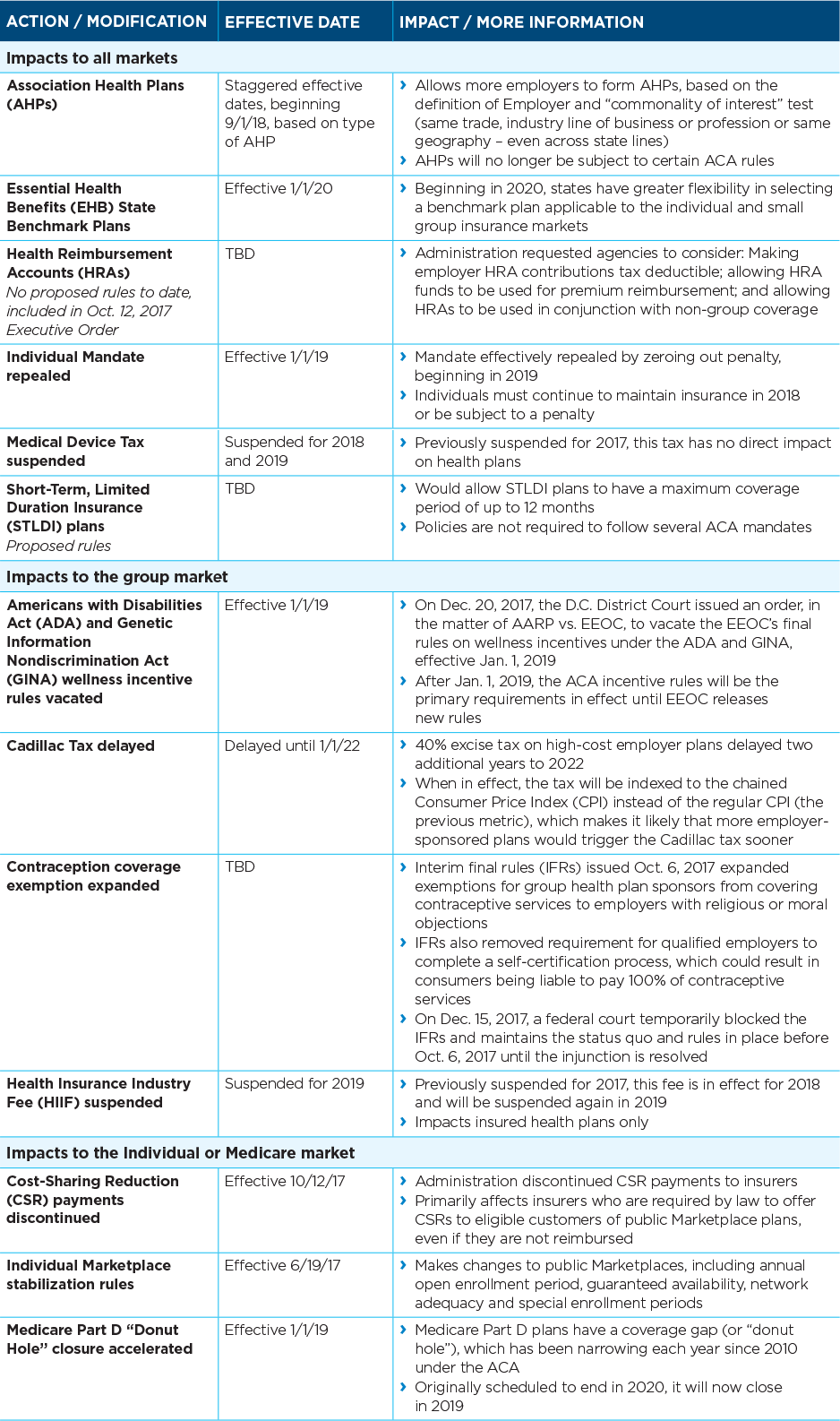FOR AGENT OR BROKER USE ONLY. DO NOT DISTRIBUTE.
FOR AGENT OR BROKER USE ONLY. DO NOT DISTRIBUTE.
The next era of health care reform began in January 2017 when, for the first time since the Affordable Care Act (ACA) became law, a Republican-controlled Congress and Administration took office. While there has not been a full repeal and replacement of the ACA to date, health care reform continues to evolve at both the federal and state levels.
The following chart outlines legislative, regulatory and executive actions that have been taken to modify or repeal parts of the ACA or related federal provisions since January 2017. For more details on these changes, visit our news alerts page on www.InformedonReform.com.

ACA largely remains in effect
It is important to remember that the majority of the ACA remains in effect, and ongoing compliance is required unless and until official guidance to the contrary is issued. As employers plan their near- and long-term health benefit strategies, they should ensure ongoing compliance with key ACA provisions, such as:
As a reminder, the impact of ACA provisions vary for every group plan and employer, depending on employer size, how plans are funded and whether or not the plan has grandfathered status.
Available online resources
Cigna has several resources to help clients and broker partners stay up to date as health care reform continues to evolve, including:
Click here to download a PDF file with this information that you can share with your clients.